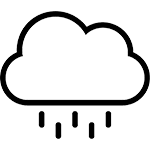The 7-35-24 fertilizer is a type of fertilizer that has many different uses. It can be used as a weed killer, to fertilize turfgrass, and it can also be mixed with water for use in the garden. The number “7” refers to nitrogen content in the mixture (nitrogen helps plants grow), while “35” stands for phosphorous content (phosphorus encourages flowering) and “24” represents potassium content (potassium stimulates plant growth).
What is 7-35-24 Fertilizer Good for?
The fertilizer can be applied to the lawn, garden, or other areas as a weed killer. To apply it as a weed killer mix one gallon of water per acre with three pounds of fertilizer in an application tank and spray over the area where weeds are present. For use on plants, add one ounce for every five gallons of water when watering plantings. The proper amount to use will depend on what you want your soil’s nitrogen content to read like (high numbers suggest high fertility) and how much rain is expected during the fertilizing season. It also depends on if you are using low-nitrogen turfgrass such as ryegrass mixed with bluegrass that needs phosphorous levels closer to 35% than 14%.
When to use it?
When to apply fertilizer: The best time for fertilizing your lawn or garden is in the cooler months of spring and fall. When you do it at this time, plants have a chance to store the nutrients from the fertilizer before growth starts up again in late winter/early summer. This also gives soil bacteria enough time to break down any leftover nitrogen so that they don’t cause plants to burn when new leaves emerge after a period of dormancy. But if there’s been no rain since October or November, feeding now can help prevent dry conditions, especially on trees and shrubs whose roots are too shallow to reach water deep down in the soil profile.
7-35-24 fertilizer benefits
- It’s a slow-release type of fertilizer.
- It is used when the plants have gone dormant in winter or fall
- The compost it contains helps provide nutrients for plant growth at any time of year and also provides soil bacteria with extra nitrogen to decompose over this long period.
- This gives fertilizing now an advantage since dry, cool conditions often mean that there’s not enough water deep down in the soil profile to keep trees and shrubs healthy until spring arrives again.
How to use 7-35-24 fertilizer
The fertilizer is sold in granular form and will be mixed with water.
It should always be applied at a rate of 14 pounds per 100 square feet, according to the label instructions.
You’ll want to apply it as soon as possible after mixing because rain can make it difficult for plants to absorb what was put down.
A standard application might include applying two tablespoons of this product diluted in one gallon of water for every ten square feet or so that you’re treating. If your area has been hit by drought conditions, then an extra tablespoon may need to be used on plantings spaced less than 50 feet apart from each other.”
In spring, begin with two applications spaced 30 days apart and then continue monthly from late April on.
Also, if you’re using a water-soluble product instead of the fertilizer solution mentioned above, then be sure to keep it out of reach from children and pets.”




















